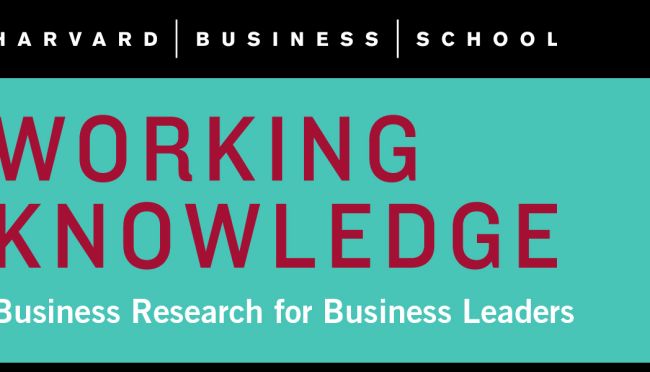Business Divisions →
→

- 23 Jul 2018
- Research & Ideas
The Open Office Revolution Has Gone Too Far
When Ethan Bernstein used wearable technology to track workers around their open office, he discovered many who were trying to avoid collaboration rather than engage in it. Open for comment; 0 Comments.
- 11 Mar 2013
- Research & Ideas
Marissa Mayer Should Bridge Distance Gap with Remote Workers
Marissa Mayer's decision to bring work-at-home Yahoo! employees back to the office has set off a firestorm. Lakshmi Ramarajan writes on how to mitigate the problem. Closed for comment; 0 Comments.
- 28 Mar 2012
- What Do You Think?
Are Factory Jobs Important to the Economy?
Summing Up: The manufacturing field is key to a strong economy, but a renewed focus on the industry will not necessarily lead to significant job growth, Jim Heskett's readers say. What do you think? Closed for comment; 0 Comments.
- 06 Feb 2012
- Research & Ideas
Kodak: A Parable of American Competitiveness
When American companies shift pieces of their operations overseas, they run the risk of moving the expertise, innovation, and new growth opportunities just out of their reach as well, explains HBS Professor Willy Shih, who served as president of Eastman Kodak's digital imaging business for several years. Key concepts include: Outsourcing ends up chipping away at America's "industrial commons"—the collective R&D, engineering, and manufacturing capabilities that are crucial to new product development. If the United States wants to keep from slipping any further in its ability to compete on the industrial stage, the government must increase its support of scientific research and collaborate with the business and academic world. Open for comment; 0 Comments.

- 07 Oct 2009
- Working Paper Summaries
Specific Knowledge and Divisional Performance Measurement
Performance measurement is one of the critical factors that determine how individuals in an organization behave. It includes subjective as well as objective assessments of the performance of both individuals and subunits of an organization such as divisions or departments. Besides the choice of the performance measures themselves, performance evaluation involves the process of attaching value weights to the different measures to represent the importance of achievement on each dimension. This paper examines five common divisional performance measurement methods: cost centers, revenue centers, profit centers, investment centers, and expense centers. The authors furnish the outlines of a theory that attempts to explain when each of these five methods is likely to be the most efficient. Key concepts include: Each of these methods can be seen as providing an alternative way of aligning corporate decision-making authority with valuable "specific knowledge" inside the organization. Jensen and Meckling's theory suggests that cost and revenue centers work best in cases where headquarters has (or can readily obtain) good information about cost and demand functions, product quality, and investment opportunities. Decentralized profit and investment centers tend to supplant revenue and cost centers when managers of business units have a significant informational advantage over headquarters. Closed for comment; 0 Comments.

Who Guarantees Your Workplace Is Safe for Return?
Building health is today a top priority for owners and tenants, but how do we know our offices are safe to re-enter? John Macomber and Joseph Allen offer best practices. Open for comment; 0 Comments.